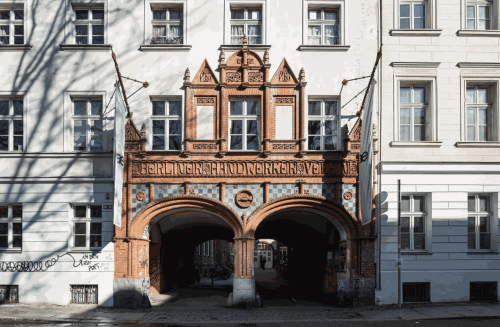This year’s biennale unfolds through quiet gestures, ancestral memory and coded dissent, offering a vision of resilience amid global crises.
The 13th Berlin Biennale, which runs through mid-September, may not be the most expansive or intricately structured edition to date. With a relatively concise list of artists only revealed on opening day, it unfolds as a choreography of concentrated, potent messages across four venues, free of grandiose production. That spareness is likely the result of budget constraints, though more than half of the sixty contributions are newly commissioned works.
Titled “passing the fugitive on,” the Biennale channels curator Zasha Colah’s research focus, offering deep dives into narratives largely emerging from the global south, particularly South and Southeast Asia. Its real strength, however, lies in how many of the works feel uncannily timely, even as they are rooted in ancestral knowledge, local traditions and postcolonial political events. These stories echo with striking resonance in today’s United States and a once-dominant Europe, where liberal rights and freedoms once assumed to be stable now appear intensely fragile, increasingly endangered by rising authoritarian and nationalist extremism. The violent repression of protests in Myanmar, for instance, registers as a chillingly familiar image.
This year, the Berlin Biennale centers on alternative oralities and stripped-down ways of transmitting stories, knowledge and messages—practices that function as acts of resistance and creative expression within repressive or precarious contexts. It explores a language that resists not only oppression but also reductive critique, drawing power from poetry and humor as counternarrative forms. “Orality is tactile knowledge, like the act of knotting histories with threads from trauma, or that of growing living bridges by shaping the roots of trees over hundreds of years,” writes Colah about her concept. “Orality has the capacity for fugitivity.”
Throughout the exhibition, forms of nonviolent resistance recur—subversive, creative and transformative. Several works focus on the ongoing, tragic and largely underreported multi-front civil war in Myanmar, drawing attention to its enduring toll amid global media silence.
As founder of the Civil Disobedience Movement (CDM) network, Nge Nöma presents an installation made of mud, water and plants resembling a trench or shelter that commemorates the resistance of Myanmar’s younger generation, known as “Generation Lee,” still fighting for a different future. Similarly, Htein Lin’s video performance Scorched Fly confronts the regime’s brutality, referencing the military’s “scorched-earth” tactics following the 2021 coup, during which civilians were burned alive. As the artist was also imprisoned for a while after the coup, the work stands as a powerful act of artistic perseverance and resilience under extreme repression.
[...]
Zasha Colah has succeeded in creating a show that doesn’t feel overly extensive or overwhelming, but instead allows visitors to weave its many threads into a coherent final picture. By the end, it becomes clear how the central metaphor of the fox operates as a curatorial strategy: “foxing” enables artworks to set their own rules in the face of repression and violence, challenging the authority that defines what is legal or illegal. These works offer alternatives to imposed truths, using thought, humor and imagination to resist blind obedience to power and lawmaking. At the same time, the Biennale succeeds in engaging with the complex political histories of the places it touches, confronting recurring cycles of upheaval while offering a platform for critical reflection.
As old worldviews collapse under the weight of polarization and overlapping political, ecological and human crises, this edition of the Berlin Biennale—like other recent biennials—points to the possibility of anchoring in both memory and imagination as the only forces still capable of stirring resilience and creativity. As a remedy for rising brutality and the misuse of power, these works ground contemporary tragedy within a continuous loop of historical recurrence, offering pathways to navigate a moment of radical transformation across culture and nature while still holding space for hope and the imagining of alternative futures.
The 13th Berlin Biennale runs through September 14, 2025, at several locations around the city.

